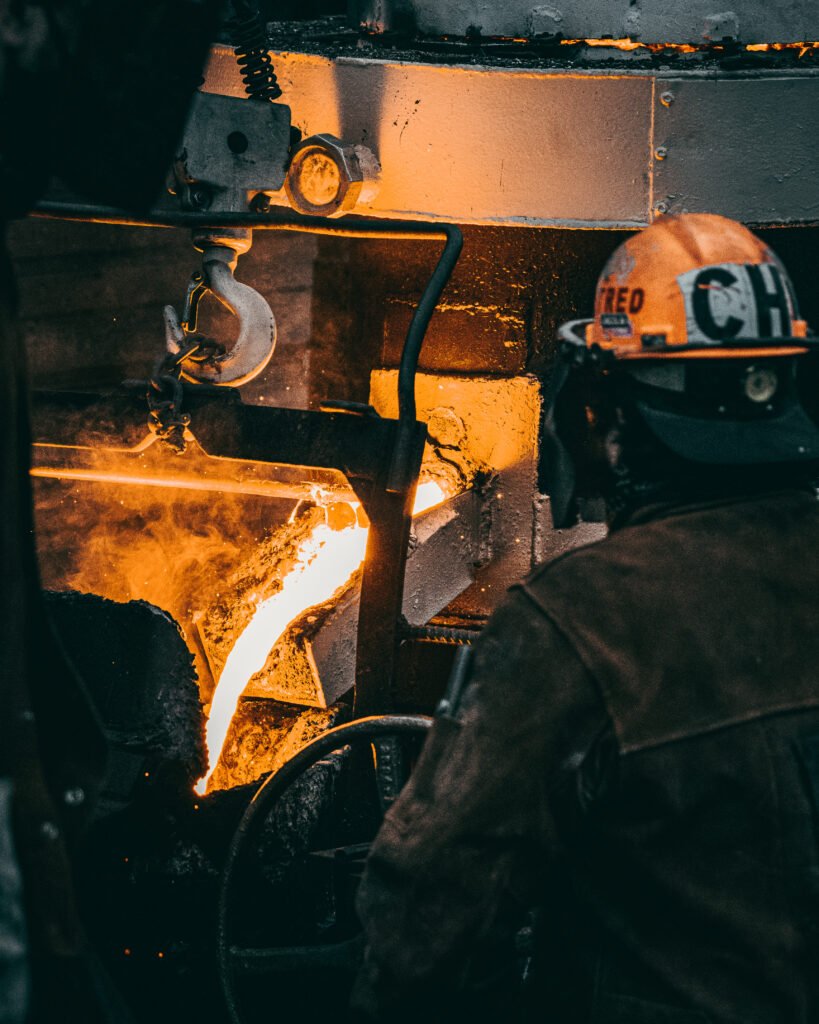Industrial casting involves selecting the most suitable method to ensure high-quality, cost-effective, and efficient production. From custom casting solutions to foundry casting options, making the right choice at the beginning of a project is crucial for its success. This guide explores different metal casting techniques, helping you navigate the complexities of industrial casting to find the best approach for your specific needs.
Early decisions will significantly impact the overall efficiency and effectiveness of the casting process. The casting process market is fast-growing, with an almost CAGR of 5.4% from 2021 to 2027.
Critical Factors in Casting Process Selection
Before deciding on a casting method, it’s essential to assess the following critical factors:
- Some casting methods suit small production, while others are ideal for large-scale runs.
- The desired surface finish is crucial in selecting the appropriate casting technique.
- Material choice is vital as different casting processes are suited for specific metals.
- Certain methods offer reduced costs and faster production times for high-volume projects.
- Casting influences the final product’s strength, durability, and performance, requiring methods that meet mechanical specifications.

6 Industrial Casting Process You Can Choose From
The casting method has been used for over 7000 years. Now, let’s delve into the most common industrial casting processes and how to choose the right one for your needs.
Sand Casting
Sand casting is the oldest and most versatile process of metal casting. It is one of the traditional modes of casting in which molten metal is introduced into a sand mold, and the mold is then shattered once the metal has solidified. The process is defined by the ability to create large and relatively complex shapes with minimum tooling expenses.
- Advantages: It has relatively low first costs compared to other production processes, its shapes and sizes can easily be changed, and it is ideal for small-scale production.
- Limitations: A poor surface finish for a more prominent part, more use of the material, and a slower manufacturing process.
Another advantage is that sand casting provides versatility in creating complex shapes with relatively low surface roughness. Some industries, like the automotive and machinery manufacturing industries, have adopted it as one of their casting methods.
Gravity Die Casting
In gravity die casting, metal is poured into a reusable metal container (Die) through which the force of gravity is applied. This technique is a usual source of parts in medium to high production volumes, and the surface finishes are better, and the tolerances are tighter than in sand casting.
- Advantages: Smaller surface roughness, more excellent dimensional stability, less porous, and less need for post-casting finishing.
- Limitations: They involve higher tooling costs, making them suitable only for relatively simple tools and less ideal for large castings.
Gravity die casting can be used in applications that require custom casting solutions with higher mechanical characteristics and surface finish, such as engine parts and aerospace applications.
Low-Pressure Die Casting
Low-pressure die casting involves injecting molten metal through the force of gas directly at the bottom of the mold, resulting in high yields and superior mechanical properties of the final product. This technique is usually used when making massive and complicated cores for castings that need smooth surfaces in their final forms.
- Advantages: Products are based on advantages such as high yield, low porosity, and the feasibility of molding intricate parts with good surface finish.
- Limitations: The disadvantages include minimizing production rates for high-pressure casting and restricted casting size due to machine limitations.
This method is popular in the aerospace and automobile manufacturing industries since most foundry casting options require maximum accuracy and strength of the final product.
High-Pressure Die Casting
High-pressure die casting is an efficient process in which liquid metal is poured quickly into a mold at high pressure. This creates mass production of small—to medium-sized components with excellent surface finish and dimension accuracy, making it an ideal method of mass production.
- Advantages: High production rates, thin walls (1-2.5mm), excellent surface finish, and minimal post-processing.
- Limitations: High tooling costs, limited to smaller components, and potential for porosity.
This process is ideal for industries requiring high-volume production, such as the electronics and automotive sectors. The need for rapid production and low unit costs drives casting process selection in these cases.
Investment Casting
Investment casting (or wax casting technique) is a sophisticated casting method that creates very complicated shapes and a high-quality surface. One such method involves creating a wax pattern, covering it in the ceramic material, then melting away all but one portion of the wax to leave behind an empty mold for casting molten metal into it.
- Advantages: High precision, intricate designs, and excellent surface finish.
- Limitations: Higher costs and labor-intensive, better suited for small or medium-sized castings.
This process is perfect for producing custom-casting solutions with complex geometries and high precision, such as turbine blades and medical implants.
Centrifugal Casting
Centrifugal casting is an industrial technique in which liquid metal is poured into a spinning mold and spread evenly and compacted, producing high-density and uniform castings.
- Advantages: High mechanical strength, minimal impurities, and excellent structural integrity.
- Limitations: Limited to cylindrical shapes and higher tooling costs.
This method is commonly used in industries requiring solid and hollow components such as pipes and tubes.
Key Takeaways
The choice of industrial casting process depends on a thorough assessment of techniques, production volume, surface finish, and materials. Understanding the pros and cons of each method ensures a balance between cost efficiency and product quality. For foundry casting options, partnering with experienced professionals can help secure the best solutions for custom designs or large-scale production. By selecting the right process, you meet high standards while staying on budget and within deadlines. At rivexa, we empower global businesses with technological expertise to navigate trade smoothly, ensuring success from concept to execution.
